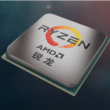NVIDIA App: The Future of Graphics Control and Optimization
In a significant shift for gamers and tech enthusiasts alike, NVIDIA is making notable changes to its software landscape. As of August 29, the NVIDIA-driven control panel has long served as the cornerstone for adjusting various graphics settings. However, its user interface has remained simplistic and outdated, failing to meet modern expectations.
The Need for Change
Simultaneously, GeForce Experience was introduced as a supplement to the driver control panel, intended to enhance game optimization and facilitate driver updates. Unfortunately, many users have expressed dissatisfaction with this tool, primarily due to its requirement for users to log in to an NVIDIA account.
In response to this feedback, NVIDIA has launched the NVIDIA App, which aims to streamline the user experience by combining the functionalities of both the control panel and GeForce Experience into a single, comprehensive platform. This innovative approach promises a one-stop service for all graphics-related needs.
Transitioning to the NVIDIA App
With the recent driver updates, NVIDIA has begun listing the NVIDIA App as optional software, while the traditional control panels continue to serve as core components of their graphics management system. It seems that GeForce Experience is being phased out, paving the way for the new app.
The latest version, 11.0.5.245, has introduced several exciting features, effectively bringing over many functions that were previously housed within the control panel. Here’s a closer look at what’s new in the NVIDIA App:
Key Features of the New NVIDIA App
-
3D Settings Control: The app supports a variety of advanced graphics settings, including:
- Anisotropic Filtering (AF)
- Anti-Aliasing (AA)
- Multi-Frame Sampling Anti-Aliasing (MFAA)
- PhysX Physical Acceleration (still an essential feature)
- Texture Filtering
- Maximum Frame Rate settings for Background Applications
-
Multi-Screen Display: The app now enables Surround function capabilities, making it easier for users with multiple monitors to manage settings and display preferences seamlessly.
-
Offline Availability: Both the system control panel and the driver settings are now accessible in offline mode, enhancing usability for those who may not always have an internet connection.
- Notebook Optimization: Advanced Optimus support has been expanded, allowing users to see which applications might prevent it from functioning fully. Optional notifications for the desktop and palette areas make it easier to stay informed.
A Glimpse into the Future
With these advancements, it’s easy to envision a future where the traditional control panel is completely phased out in favor of the NVIDIA App. Gamers and professionals alike can anticipate a more uniform experience that caters to their needs without the hassle of separate logins or interfaces.
Which Do You Prefer?
As NVIDIA continues to evolve its offerings, the question remains: will users embrace the NVIDIA App as their go-to tool for graphics management? The transition promises a more efficient and user-friendly experience, making it easier than ever to optimize game settings and manage preferences.
Conclusion
The introduction of the NVIDIA App marks a crucial step in modernizing NVIDIA’s graphics control ecosystem. By integrating essential features from both the old control panel and GeForce Experience, the app sets a new standard for user experience. As you explore this new tool, consider how it may enhance your gaming and creative endeavors. It’s an exciting time for NVIDIA users, and the future looks promising.








